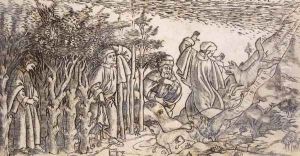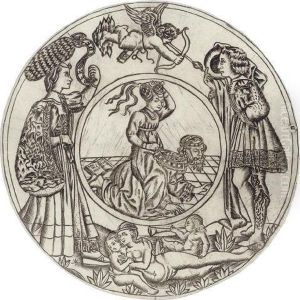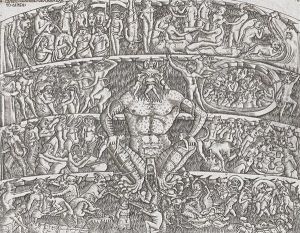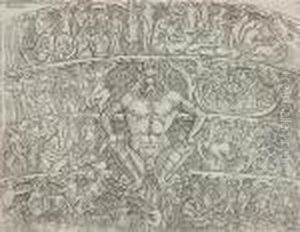Baccio Baldini Paintings
Baccio Baldini was an Italian engraver of the Renaissance period, born in Florence in 1436. Though not as widely recognized as some of his contemporaries, Baldini's work is significant for its role in the early development of the engraving technique in Italy, a method that would become crucial in the proliferation of artistic and scientific knowledge throughout Europe. His life and career were deeply intertwined with the vibrant cultural and intellectual milieu of Florence, a city that was at the forefront of the Renaissance movement.
Baldini's work is often associated with the influence of the leading artists of his time, including Sandro Botticelli, with whom he is believed to have collaborated. This collaboration is most notably recognized in the illustrations for the 1481 edition of Dante's 'Divine Comedy,' where Baldini's engravings are thought to have been based on designs provided by Botticelli. These illustrations are among the earliest examples of the use of engravings to illustrate books, marking a significant moment in the history of printmaking. Despite the importance of this work, few details about Baldini's life and training are known, and much of what is attributed to him is based on stylistic analysis and historical context rather than documented evidence.
Baldini's technique involved the intaglio process, where designs were incised into a metal plate, typically copper, with a burin. The plate was then inked, wiped clean (leaving ink only in the incisions), and pressed onto paper, a method that allowed for multiple reproductions of a design. This technique was relatively new to Italy at the time, having been introduced from Northern Europe, and Baldini was among the first in Florence to experiment with and refine the process. His works, primarily religious and mythological scenes, reflect the humanist interests of the period and are characterized by their detailed line work and intricate compositions.
Despite his contributions to the development of engraving in Italy, Baldini's legacy is somewhat overshadowed by the achievements of later artists who further advanced the technique. After his death in 1487, the art of engraving continued to evolve, eventually leading to the creation of more detailed and sophisticated prints. Nonetheless, Baldini's efforts in the latter half of the 15th century represent an important chapter in the history of art, highlighting the role of engraving in the transition from medieval to modern modes of production and dissemination of artworks. His work not only contributed to the spread of Renaissance ideals but also laid the groundwork for the future of visual communication.




